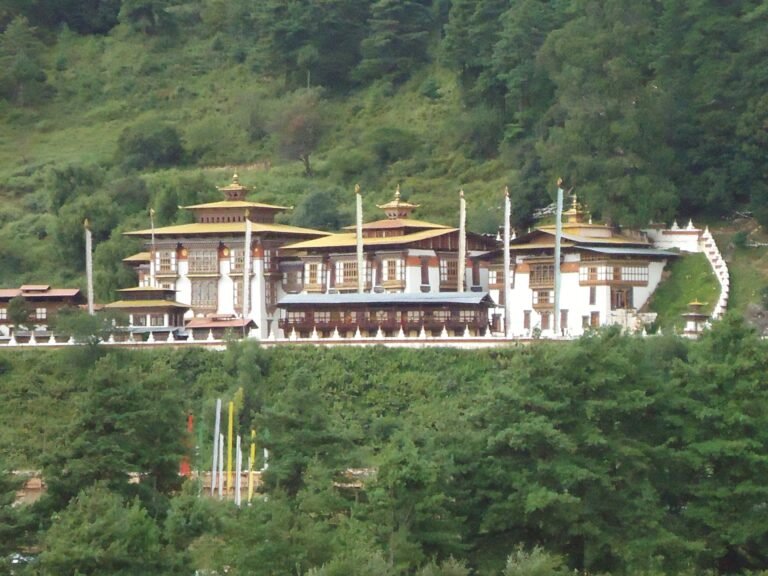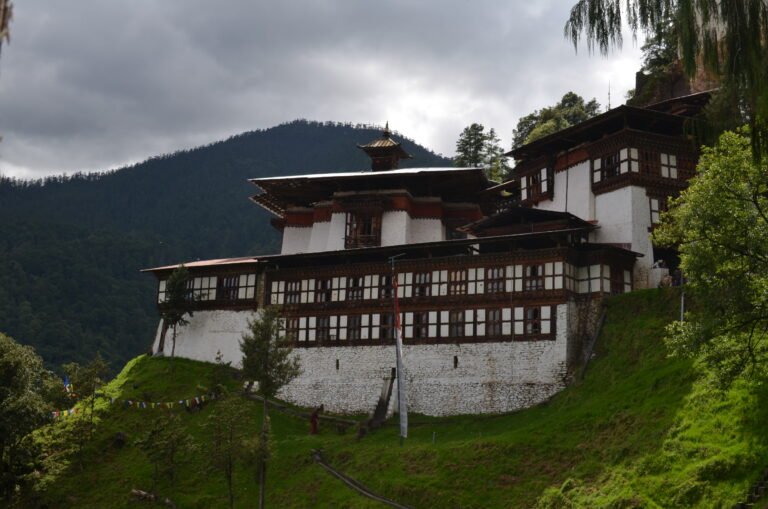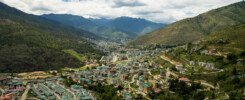A visit to Bhutan will be incomplete without visiting some of the most beautiful Buddhist temples in the country.
Bhutan is the only Mahayana Buddhist Kingdom in the world, with Buddhism as the major religion for over 75% of the population. Buddhism is a way of live for most Bhutanese, and temples in the villages form an important aspect of community lives. The temples in addition to being places of worship are venues for important festivals in the villages where people come together in their finest clothes.
Depending when you visit Bhutan, you will have an opportunity to witness some of these festivals. We highlight the top five monasteries that should form part of your Bhutan holidays.
Taktsang (The Tiger’s Nest) Monastery, Paro

Taktsang is Bhutan’s cultural icon. Visiting this spectacular monastery is a must.
The Taktsang Palphug or the (the Tiger’s Nest) is a Buddhist temple which is built on a huge rock cliff-face at 900m (3150m above sea level) above the Paro Valley. Guru Rinpoche, who spread Buddhism across the Himalayas, is said to have flown here in the 8th Century on the back of a Tigress. Guru Rinpochoe, also called Guru Padmasambhava is a Buddhist master from India revered revered across the Himalayas.
The Guru meditated here in a cave for three years. The main shrine of the monastery stands over the cave now. The monastery was built around the holy cave by the 4th Druk Desi (temporal ruler of Bhutan) Gyalse Tenzin Rabgay in 1692. In 1998, the monastery was burnt by a fire and now has been restored to its original form by 2005.
A hike (medium difficulty) of 2-3 hours (each way) along the winding footpaths and through pine forests with beautiful views of the wide valley below takes you to the monastery. The monastery famously has been visited by the Prince of Wales and most recently by the Duke and Duchess of Cambridge.
Chimi Lhakhang, Punakha

The Chimi Lhakhang, also known as the Temple of Fertility was built in the 15th Century. This temple is dedicated to Lama Drukpa Kuenley, who is also known as ‘the Divine Madman’ – a yogi and a crazy wisdom-master who used unconventional conduct and practices (e.g. significant sexual overtones and use of phallic symbols) to teach Buddhism.
The Divine Madman subdued a demon from DochuLa (a pass between Thimphu and Punakha valley) and trapped her in a rock at this location. The location is marked by a Chorten (stupa) that stands at the monastery. The monastery is famous for the pilgrimages that devotees from all over the country make to seek blessings to conceive children. Children born through blessings at the monastery or who come to seek names will generally have ‘Chimi’ or ‘Kuenley’ as one of the names in reverence to the monastery and the lama.
The monastery is located 10 kms from Punakha, near a place called Sopsokha. It is a pleasant walk through the village and the fields to get to the monastery.
Kurey Lhakhang, Bumthang

Bumthang or Jakar, with many Buddhist monasteries, is one of the most beautiful valleys in Bhutan, and a destination for travellers from within and outside Bhutan.
One of the most revered monastery to visit is the Kurjey Lhakhang which is about 10kms from the town. Kurjey, which literally means the body (kur) print (jey), celebrates potentially the first of the many visits of Guru Padmasambhava to Bhutan in the 8th century.
Guru Padmasambhava was invited by the ruler of Bumthang, Sindhu Raja, to help him retrieve his sog (life-force) from a local diety. The Guru subdued the diety thus healing the King. Guru Rinpochoe left a print of his body in the cave where he meditated, and this can now be seen in the monastery. The monastery compound also has a cypress tree which is believed to have grown from the Guru’s walking stick.
One can also visit two other temples in addition to the main temple here. The Kurjey Tsechu is celebrated on the 10th day of 5th month of the lunar calendar every year.
Chorten Kora, Trashiyangtse

Chorten Kora stupa is in the beautiful eastern Bhutan valley of Trashi-Yangtse. The stupa resembles the Boudhnath stupa in Nepal.
It was constructed in 1740 by Lama Ngawang Lodro, the nephew of Zhabdrung Ngawang Namgyel (founder of Bhutan) in order to subdue a local demon. The stupa took twelve years to complete. It is said that during the construction, a princess from Arunachal Pradesh in India, entombed herself within to meditate on behalf of all sentient beings.
The stupa marks two festivals, Dakpa Kora on the 15th day of the first month of the lunar calendar, and the Drukpa Kora on the 30th day of the same month. The festival draws devotees from Bhutan and also from Arunachal Pradesh.
Tango and Cheri Monasteries, Thimphu

These two monasteries are located upstream of the river Wangchu, which flows through the capital, Thimphu. Both these monasteries can be reached by a short drive up the valley followed by short hikes.
The Cheri Monstery is one of the first Buddhist monasteries built by Zhabdrung Ngawang Namgyal, the founder of Bhutan, after his arrival from Tibet in 1616. The monastery, established in 1620, now is a major retreat and teaching centre for Kagyu Buddhist School.
The Tango Monastery which is on the opposite hill to Cheri was built in 1688 by 4th Druk Desi Tenzin Rabgye. The monastery is said to have founded by Phajo Drugom Zhigpo, and the Zhabdrung is said to have meditated in a cave nearby.
Both Tango and Cheri monasteries hold some of the oldest Buddhist wall paintings.


